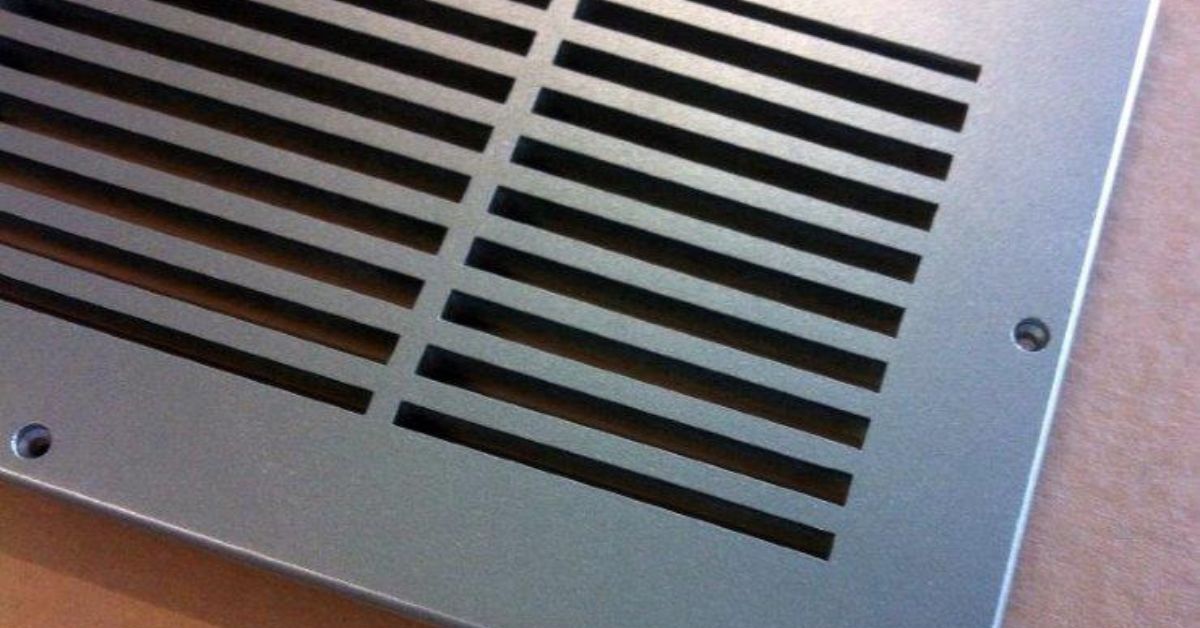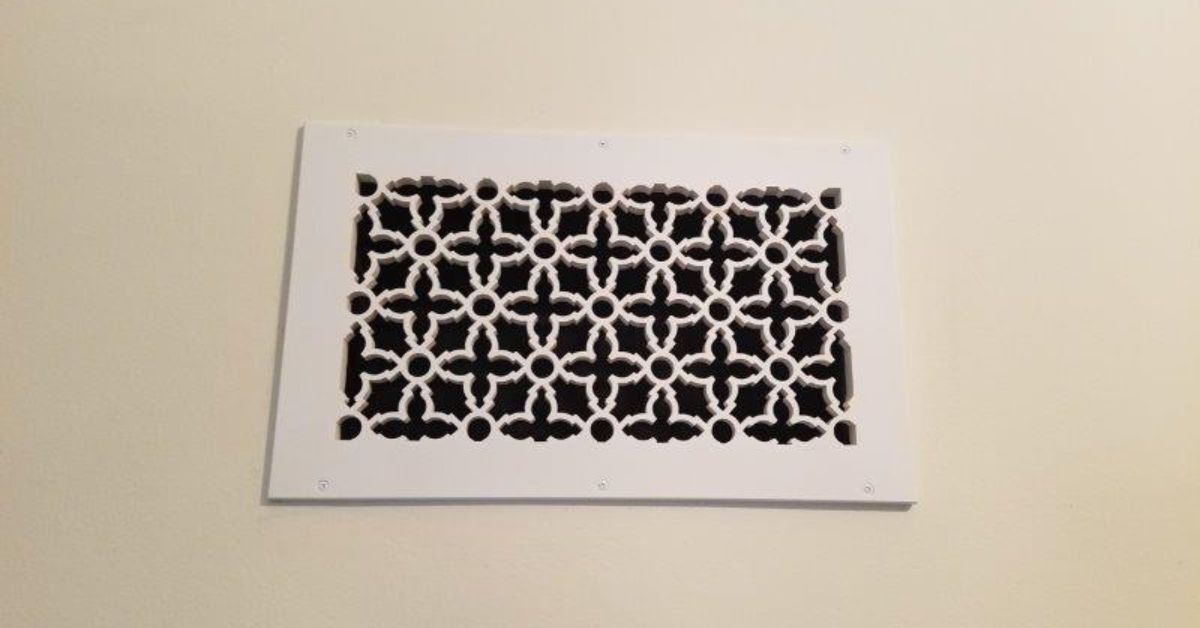Resin air vent covers are durable, lightweight alternatives to traditional metal or wooden vents. These polyurethane covers resist moisture and warping while providing excellent airflow. They are perfect for high-humidity areas, such as tropical climates, and homes near bodies of water, especially the ocean.
Painting resin air vent covers offers an affordable way to refresh your space without replacing the entire ventilation system. Resin requires preparation and painting techniques to ensure the finish adheres properly and lasts for years to come. With these seven practical tips for painting resin air vent covers, you’ll have everything you need to transform your vents into seamless parts of your home’s design.
Why Choose Resin Air Vent Covers?
It’s worth understanding why resin air vent covers have become increasingly popular among homeowners and contractors alike before diving into painting techniques.
Durability and Longevity
Resin air vent covers withstand temperature fluctuations better than wood and resist rust, unlike metal alternatives. They maintain their structural integrity even in high-humid environments such as bathrooms and basements.
Lightweight Installation
These covers weigh significantly less than metal counterparts, making installation easier and reducing stress on mounting hardware, which means less risk of sagging over time.
Moisture Resistance
Unlike wood vents that can warp or rot, resin covers remain stable in humid conditions, making them ideal for kitchens, bathrooms, and other areas prone to moisture.
Cost-Effective Solution
Resin covers typically cost less than premium metal or wood options while offering comparable performance. Properly painted resin air vent covers can mimic the appearance of more expensive materials.
Versatile Design Options
The surface of resin air vent covers accepts paint well, allowing for unlimited color and finish possibilities. You can achieve everything from subtle satin finishes to bold accent colors.
Tips for Painting Your Air Vent Covers
You may need to repaint your resin air vent covers from time to time to keep up with remodeling and redecorating. Here are some tips to ensure your paint project’s success.
Tip 1: Gather Your Supplies
Success starts with having the right materials before beginning your project. Quality supplies make the difference between a finish that lasts years and one that chips or peels within months.
Essential Painting Supplies:
- Tack cloth or microfiber cloths
- Plastic primer specifically designed for synthetic materials—we like B.I.N primer
- Spray paint (easiest) or high-quality synthetic bristle brushes, or foam rollers
- Drop cloths or newspaper
- Safety glasses
- Dust mask
Make sure there’s adequate ventilation and wear a respirator for spray applications before starting work.
Tip 2: Good quality materials
Investing in quality primers and paints designed for synthetic materials will save time and frustration. Often, cheap alternatives fail to properly bond with resin surfaces, leading to premature failure. You can test your paint or primer on the back of the grille.
Tip 3: Clean the Surface
Proper cleaning removes dirt, grease, and static charge that can interfere with paint adhesion. All surfaces accumulate dust, so wipe the grille until it’s clean.
Tip 4: Apply Primer
Primer creates the foundation for a durable, long-lasting paint job. This step is crucial when painting resin air vent covers because standard primers often fail to bond properly with synthetic materials. Select a primer specifically formulated for plastics or synthetic materials. These primers contain special bonding agents that chemically adhere to resin surfaces.
Tip 5: Apply Thin Coats
Multiple thin coats of spray paint create a more durable and attractive finish than fewer thick applications. This technique also reduces the risk of drips, sags, and other application problems. If you’re using a brush, load your brush or roller with paint, then remove any excess against the container’s edge. Apply paint in smooth, overlapping strokes, maintaining a wet edge as you work.
Tip 6: Let Each Coat Dry Properly
Proper drying time between coats is essential for achieving a durable finish. Rushing this process can lead to poor adhesion, softness, and premature failure. Paint may feel dry to the touch within hours, but complete curing can take days or weeks. Follow manufacturer recommendations for recoat times, which typically fall between the touch-dry and fully cured stages.
Tip 7: Reinstall Carefully
Proper reinstallation protects your newly painted surfaces and ensures optimal performance. Take care to avoid scratches or damage during this final step. Wear clean gloves when handling painted vent covers to prevent fingerprints and skin oils from contaminating the surface. Even fully cured paint can be marked by rough handling.

Maintaining Your Resin Vent Cover
Regular maintenance preserves the appearance and extends the life of your painted resin air vent covers.
Routine Cleaning Methods
Regularly dust the vent cover with a soft cloth. Avoid harsh chemicals that could damage the paint.
Promptly Addressing Damage
Repair chipped or scratched covers as soon as possible to prevent further damage. Fill in small chips with touch-up paint and use sandpaper to smooth out the surface before repainting.
Remove the cover and replace it with a new one if there’s significant damage. Ensure proper fit by measuring the dimensions beforehand.
Protecting Against Weather Elements
Outdoor air vent covers often encounter harsh elements, including rain, snow, and UV rays. Apply a clear sealant over the painted surface every few years to protect against weathering.

When To Purchase New Vent Covers
Knowing when to replace your outdoor air vent covers is crucial for maintaining proper functionality and aesthetics. Consider purchasing new vent covers if you notice significant damage, such as cracks, warping, or rust that compromises their performance.
Additionally, worn-out vent covers might be contributing to the problem if you experience persistent airflow issues or increased energy bills. It’s also a good idea to invest in new covers when upgrading the appearance of your exterior, ensuring they match your home’s design and blend seamlessly with the overall look.
Improving Airflow With Style
Resin vent covers play a crucial role in maintaining your home’s functionality, efficiency, and aesthetic appeal. You can ensure optimal airflow, reduce energy costs, and enhance your property’s appearance by routinely inspecting and replacing damaged or outdated covers. Achieving the look and functionality you want is easier than ever with these seven practical tips for painting resin air vent covers.
Are you thinking of upgrading your home’s vents? Majestic Vent Covers know that aesthetics is just as important as airflow for many homeowners. Our fancy air vent covers add a touch of class to any space. See for yourself how they can improve the look of your home!

